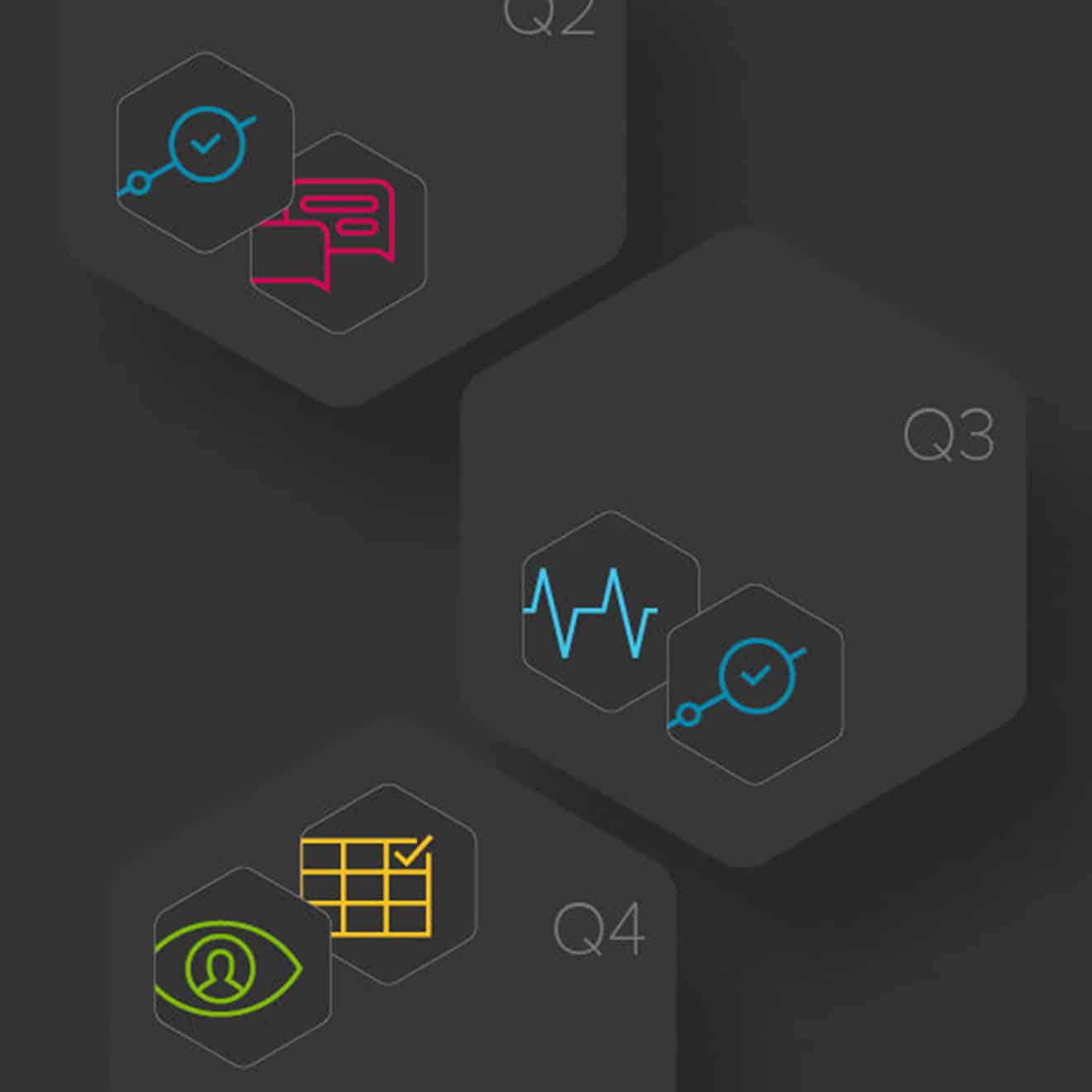How a company without managers gets where they need to go.
Do you ever fantasize about driving off the highway during a traffic jam and seeing how far your car can manage off the road? At first you might move faster, but sooner or later for one reason or another… you get stuck. That’s when you realize, the roads are there for a reason.
Strategic plans and processes are the roads of any organization. In theory, they exist to guide teams as they turn ideas into action. And yet, at some point individual employees will be navigating those roads alone, making their own decisions about how to get a project to the end of the road. So how does an organization maximize personal innovation with minimal chaos?
Your employees have to learn how to drive.
Rules might not seem like the obvious answer to harnessing creativity and growth, but at management consulting firm August Public, organizational-design leaders like Alexis Gonzales-Black think structure is the key to freedom.
Gonzales-Black, a mover-shaker whose career spans design roles at IDEO, Zappos, and Teach for America, puts it like this: “Design constraints actually make you a better designer… The structure allows us to operate creatively on the path—and head in the right direction.”
Designing 21st century org structures is now Gonzales-Black’s mission with August, a management consulting firm on the frontlines of organizational change and adaptive leadership practices. August is hired by companies to fix the “alignment” problem; the gap between leadership and its “drivers.”
The greatest challenge, which August frames in its mission statement, is that, “The way most organizations operate today gets in the way of good teamwork, instead of supporting it.”
Simply put, August helps define rules of the road that enable each organization to achieve its mission. At August—these rules are paramount because of a unique feature—they have no managers.
It was a concept Gonzales-Black was uniquely familiar with even prior to joining August.
When Zappos CEO Tony Hsieh decided he wanted to try a decentralized management method called Holacracy at the shoe and clothing retailer he helped found, Gonzales-Black was the employee he tapped to lead the rollout across the 1,500 person organization.
Gonzales-Black describes Holacracy as a “wild system” that distributes authority to to the teams that are doing the work. It’s a far cry from the anachronistic visual that still usually forms when people envision a contemporary business: a pyramid with a CEO at the top with layers of seniority underneath her. And whenever a decision needs to be made, it has to be floated to the next higher up, only to be brought back down in a Byzantine process that ultimately slows everything.
The iconoclastic Gonzales-Black wanted to knock the pyramid flat.

Holacracy is based on the belief that when given the right environment, people are capable of managing themselves. It’s akin to operating in a startup where people have decision-making authority over their work rather than running things up the chain of bureaucracy.
It was a fascinating experiment that eventually brought Gonzales-Black to the conclusion that traditional top-down “command and control” management is a lie. She would then live that idea at August, a company that has no managers.
“I manage myself, I prioritize my own work, and set my own goals,” Gonzales-Black said.
It sounds like a dream. But every organization and every individual still needs a road with rules.
The Road Builder
The question that naturally arises after the pyramid is pulled down is, What do you do with all this brick? How do you hold people accountable without managers? That’s when August turned to OKRs (Objectives and Key results) to make autonomy and structure meet.
“In a self-managed organization, there’s the possibility of going in different directions. There are a couple of things that become very important like aligned purpose. Where are we going? What are we working toward? And then, you have to unpack that purpose into a set of goals. I had been creating goals without any rigor for many, many years, and then when I came to August, we also struggled with setting meaningful goals. And that’s when OKRs came into the picture.”
One main reason, Gonzales-Black shared, is that OKRs provided the clarity and habits needed to achieve meaningful goals. Even better, they aligned with August’s mission to promote good teamwork.
Brick by brick, August used OKRs to build a roadway system for autonomous teams, with a clear destination and mile markers. Or, as Gonzales-Black put it, with self-management. “You can’t rely on a few good managers to keep everyone in check. Now everybody has to be smart about the way they set goals and the metrics they are using. You keep people aligned by coming up with benchmarks and check-ins at a regular cadence… OKRs really help.”
At August, OKRs are crafted through a two-part process. First, each individual defines their “purpose,” a simple statement on why their roles exist as well as which responsibilities they transparently own, called “accountabilities.” Publicly clarifying roles before writing OKRs sets a solid foundation for setting meaningful goals.
August’s OKR setting process exemplifies three key traits for marrying autonomy and structure at work: employee contribution to company goal planning, shared metrics, and transparency. With OKRS, anybody can check their goals and find out if they were on the right or wrong track with data points—all without a manager interceding. But above all else, Gonzales-Black wanted to emphasize how OKRs can help create really good goals.
“The beauty of it is, it’s not overly complex. It’s simple,” continued Gonzales-Black.

Driver’s Ed
To highlight the simplicity and lightness of it, Gonzales-Black offered this high-level OKR example from August: OHire 1 full-time person by end of T13.KR14 previous months of meeting $66k sales/month.KR2Confirmed 50% revenue for next 6 months.KR3Long-term forecasted revenue for months 6-12 @ 25%.SOURCE: AUGUST PUBLIC
In just a few lines of text, August has transparently provided the manual on how it will not only define successful outcomes toward their inspiring mission. “The thing about creating an ambitious goal and finding the right place for it to be within the company mission is a nice, clear methodology to apply to all of our goals. And I mean that for recruiting, selling work, and delivering work—in all of those scenarios, you can apply OKRs. They help turn teams into units of change-makers.”
As a small team August was doing well leveraging relationships and growing the business. But as they got bigger, it was harder to keep everyone on the same page. That’s when they decided to use OKRs to create goals. They had to figure out a way to break down their goals into trackable milestones, and that’s exactly what OKRs did.
“I wish we had them before, but that is a different article,” Gonzales-Black jokes.
The Road
August also advocates for OKRs among its clients, which include such OKR-using organizations as PepsiCo, Planned Parenthood, and the Sundance Institute. While many of them have already heard of OKRs, August drives home the point that OKRs can really close the gap between what the leadership is saying and what the teams are doing.
It’s what makes August’s spin on the practice of OKRs so unique: in destroying the pyramid, they really help bridge the gap between plan and practice, between what we say and what we do, and especially between leadership and teams.
As the workplace changes, companies, teams, and especially individuals need to be good at autonomy to get anything done. To do that, you have to clarify purpose, accountability, and instill the habits required to be successful.
Gonzales-Black adds: “These are the habits we track [at August] on an individual level to make sure we are growing as an organization:
- Have you had an intro meeting this week?
- Have you tried a new positioning and shared your insights with our team this week?
- Have you done something helpful for a high-value contact in your network this week?
- Have you asked for a referral this week?
- Have you sent a high-quality incisive email soon after a meeting this week?
- Have you had a BIG MOMENT with a client this week?”
These bullet points are the jumping off points for every person at August to practice OKRs—to learn to drive with good habits and become great drivers. Because of this dynamic alignment, there is freedom. Or, as Gonzalez-Black put it, the innovation and experiment aren’t in the structure of “the road,” but wholly how you decide to drive on it.
And if everyone is driving like this, that’s how you get a fleet of great drivers.

Sam Prince (samprince.com) is a journalist, storyteller, and the digital strategist of WhatMatters.com.
This article was originally published by Whatmatters.com.






